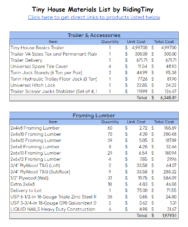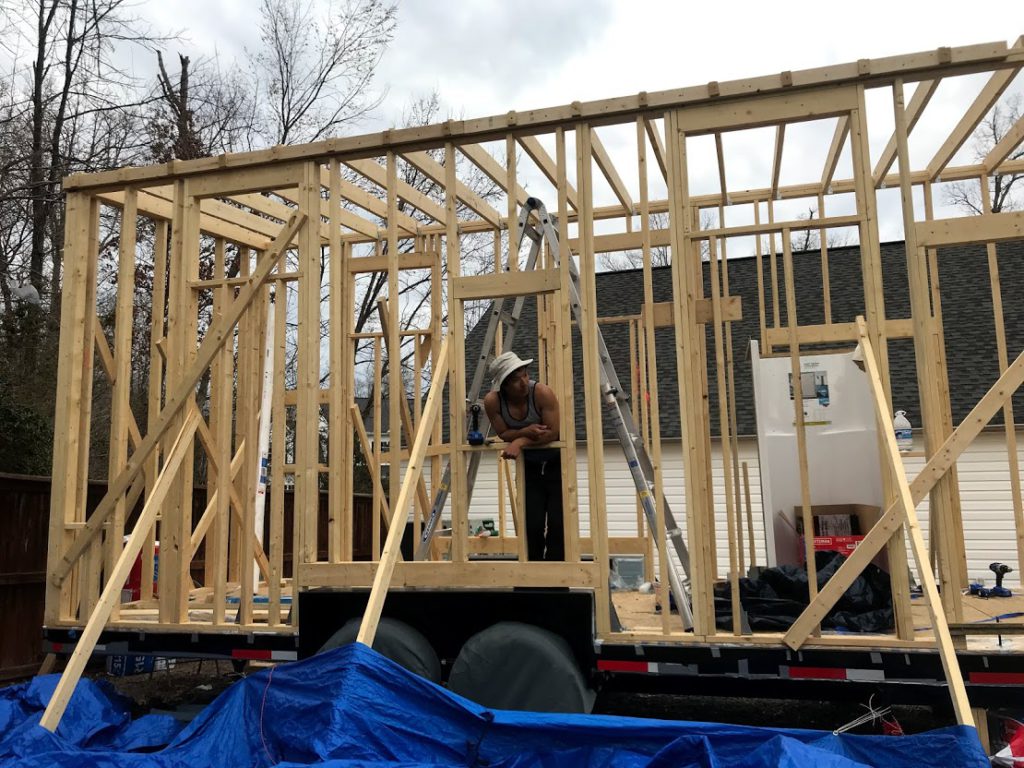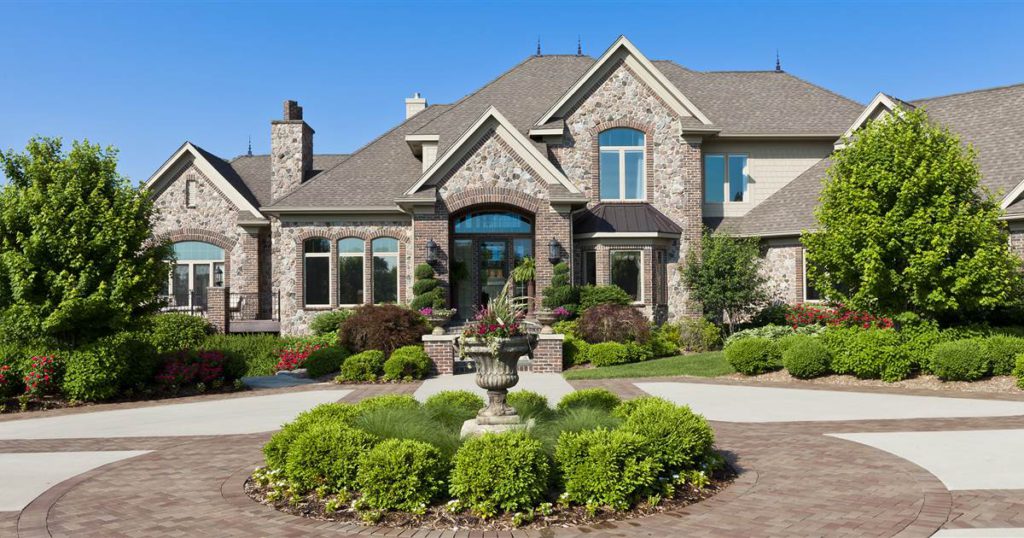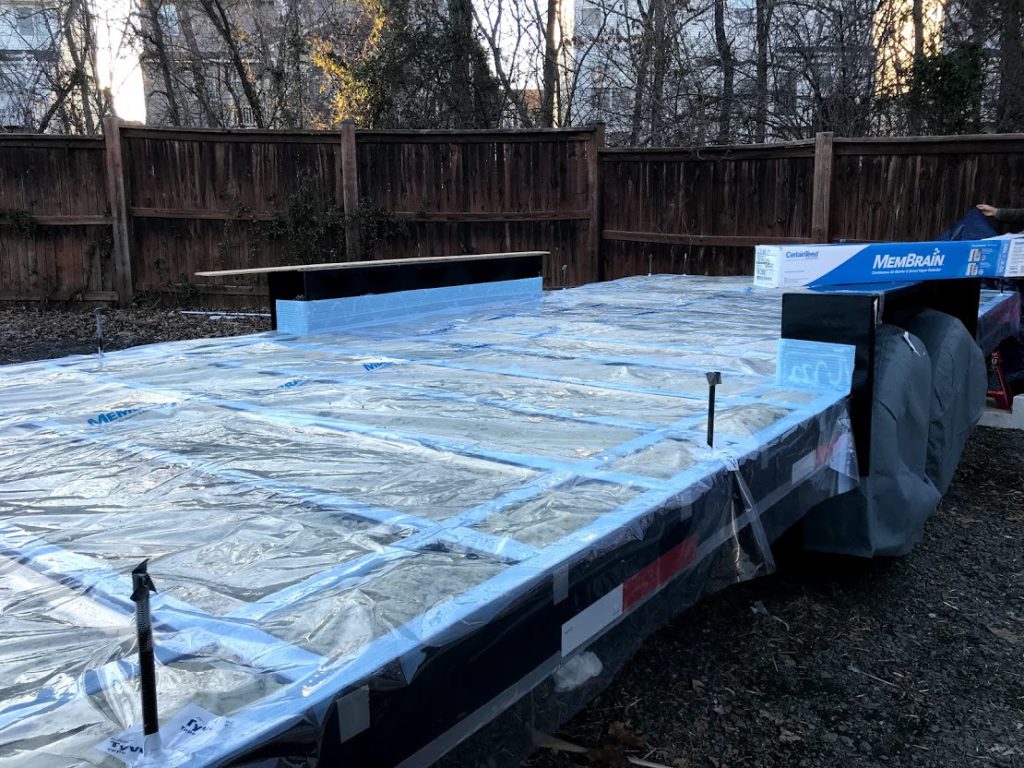
By entering your email address you agree to receive emails from Riding Tiny. We’ll respect your privacy and you can unsubscribe at any time.
What is the Tiny House Movement?
- By Sang Kim
- Updated:
If you’ve been following the news lately, you’ve probably heard stories like Realtors fielding offers as high as $1M above asking price and 3 signs another housing bubble is looming in the US.
The COVID-19 pandemic has really caused something unthinkable: Eliminating affordable housing while making it even more difficult for renters to catch up to rising rent payments.
This phenomenon begs the question: Is traditional housing option the only path to home ownership? Do we have to work our entire lives only to tie ourselves to a 30-year mortgage?
Tiny house movement tries to address these questions and provides practical solutions to these problems. Let’s take a look at what it has to offer.
What Is The Tiny House Movement?
The tiny house movement is a social movement that advocates simple living that revolves around a small home.
Instead of putting emphasis on materialistic possessions and owning larger homes, people who enter this movement seek to save money, reduce their environmental footprint and/or spend more time on things that matter to them the most.
What Are Tiny Houses?
According to the 2018 International Residential Code, a tiny house is a dwelling unit with a maximum of 400 sq ft of floor area, excluding lofts.
Tiny homes can either be built on a foundation or built directly on a trailer. Tiny homes are typically independent structures that can be connected to a main power source.
Tiny homes are energy-efficient, moveable (if built on a trailer), and most importantly affordable. Putting a roof over your head shouldn’t cost you a fortune and tie you to a multi-year mortgage that you are enslaved to.
Why Be Part of The Tiny House Movement?
People join the tiny house movement for various reasons. The most popular reasons include reducing financial burden, reducing environmental footprint, and pursuing simpler living.
Here is a great infographic that paints a great picture of demographics of people joining the tiny house movement.

In summary, tiny home dwellers have less debt, more savings, higher percentage of home ownership, and more educated then the average American.
Financial benefits of Tiny House Living
“In our modern society, the “bigger is better” mentality still has a strong presence in our lives. Over the past 45 years, the median American home has grown 60% while the number of people in an average household has decreased over this period.
Therefore, it is not surprising to learn that Americans spend nearly 40% of their income on housing today. That means many people will spend their hard-earned money on paying off 30-year mortgages and interests over their lifetime.
When we can finally afford an “average-sized” home, we often rush to fill empty spaces with more stuff that we may not necessarily need. Because of the high costs of living associated with owning a home, 78% of US workers live paycheck to paycheck.
We are working harder than ever trying to afford bigger houses than we need. Instead of spending more time and money for ourselves, we go to work, spend a good chunk of our income on housing, then only to repeat the process year after year. It doesn’t have to be this way.


So what’s the solution to this problem? One solution is to live smaller. By living smaller, we can speed up the time it takes to own a home that is affordable.
Most DIY tiny homes cost 15k to 40k to build depending on the size and specs of the home and take 3 to 9 months to build full time.
Once you own a tiny home, the cost of living reduces drastically. For instance, my housing expenses were reduced from $1900/mo to $500/mo (~75% decrease) when I started living in my tiny home.
It took about 2 years for my tiny house to pay for itself. My tiny home is now generating around $1400/mo through savings associated with living in a smaller home. I am debt-free, have a roof over my head, and own a custom-built home that I love.
Let’s compare these numbers to costs associated with owning an average home.
The tiny house movement allowed me to own a home in a few years that normally takes decades for most people. The tiny house movement allowed me to spend more quality time with my family and more time to reflect on my health and personal goals.
Is Tiny House Movement Right For Me?
This question is one of the first questions I asked myself before joining the tiny house movement back in 2019.
It’s been 2 years since, and I can tell you that living in a tiny home isn’t picture-perfect and it brings challenges that are unique to tiny living.
Here are the questions you must ask yourself before joining the tiny house movement.
1. Can my significant others and I live comfortably in a small space?
Adjusting to tiny living isn’t instantaneous. You must maximize livable spaces while optimizing your living spaces.
Even then, 200 – 400 sqft may not be enough for you and your family.
If you are the type of person who gets claustrophobic easily, I would highly encourage you to try renting a few nights in a tiny home on Airbnb.
I also encourage you to go to a tiny house festival to experience the tiny living before you dump your savings into a lifestyle that you may later come to regret.
2. Can I live comfortably while being under the radar?
There are no laws banning you from building a home on a trailer. However, in most states and counties, the zoning department prevents you from living in a tiny home on wheels full-time.
In some rare cases, you may be asked to vacate your current parking space. These “evictions” are usually complaint-driven, so you must have some courageous spirit in you to be prepared to move if it ever does happen to you.
3. Finding parking spaces isn’t always easy
The closer you are to the city limits, the harder it will be for you to find land that can accommodate your tiny home. If you have a job that requires you to be in a specific location, although not impossible, your tiny house parking search will become more difficult.
Final Thoughts
Despite the challenges of tiny house living, the tiny house movement allows you to enjoy a lifestyle full of adventure and intentional living. Are you interested in taking the next steps? Want to learn more about the tiny house movement? Take a look at the resources below!
Thank You For Reading With Us!



Get our FREE tiny house materials list to help estimate costs of your tiny home.
By entering your email address you agree to receive emails from Riding Tiny. We’ll respect your privacy and you can unsubscribe at any time.


Structure of a Tiny Home
A tiny home is basically a home that is smaller than a standard home (obviously). That being said, there are some key differences you must consider when building a tiny home on wheels.
- Foundation – Tiny homes are built on trailers so you must give special attention to securing your home to the trailer.
- Subfloor – Subfloor provides the base to which your finish flooring will be installed onto. It bears the load of the structures above it and must be secured to the trailer frame using special screws.
- Walls – Bottom plate, studs evenly spaced, rough openings for windows and doors, and top plates make up the walls of your tiny home. Walls help withstand the weight above it and withstand forces of nature as it gets towed on the road.
- Roof – To reduce weight and increase energy efficiency of tiny homes, popular roofing option for tiny homes are metal roofing. Roof protects your house from the elements and helps your house “weathered in”
- Exterior – Sheathing and exterior siding provides rigidity to your house and protect your tiny home from the elements. There are many options to choose from and we will cover them in sections to come.
- Plumbing/ Electrical – Once framing and weatherproofing process has been completed, plumbing and electrical rough in process begins. Electrical panel gets installed along with supply inlet as well as electrical circuits around the home. Supply and drain plumbing will be installed around the same time.
- Insulation – With all electrical, plumbing work finished, you can start adding insulation to your walls, roof, and subfloor. Insulation provides comfort by resisting flow of heat which is crucial in keeping your house cool during the summer and warm during the winter.
- Interior – With everything finished, you can start covering up your walls & roof, and subfloor using interior siding and flooring of your choice. You connect fixtures and appliances to complete the electrical and plumbing work. Now your tiny house is ready to be lived in.


The Current State of the Housing Market
“Bigger is better” mentality still has a strong presence in our modern society. Over the past 45 years, the median American home has grown 60% while the number of people in an average household has decreased over this period.
Therefore, it is not surprising to learn that Americans spend nearly 40% of their income on housing today. That means many people will spend their hard-earned money on paying off 15 to 30 year mortgages and interests over their lifetime.
When we can finally afford an “average-sized” home, we often rush to fill empty spaces with more stuff that we may not necessarily need. Because of the high costs of living associated with owning a home, 78% of US workers live paycheck to paycheck. This isn’t right, and it doesn’t have to be this way.
To make the situation worse, the COVID-19 pandemic caused a housing boom, driving the cost of a home to the realm of unaffordable. The cost of homes are inflated like it has never been inflated before. The current and future state of the housing market isn’t looking too bright.
- Can I and/or significant others live in a small space – Adjusting to tiny living isn’t instantaneous. You must maximize and optimize your living spaces to your needs. Even then, the space may not be enough. If you are the type of person who gets claustrophobic easily, I would highly encourage you to try a few nights in a tiny homes on Airbnb or go to a tiny house festival to experience the tiny living before you dump your savings into a lifestyle that you may later come to regret.
- Can I live comfortably while being under the radar? – There are no laws banning you from building a home on a trailer. However, in most states and counties, zoning department prevents you from living in a tiny home on wheels full-time. In some rare cases, you may be asked to vacate your current parking space. These “evictions” are usually complaint driven, so you must have some courageous spirit in you to “break the law” everyday and be prepared to move if it every does happen to you.
- Finding parking spaces isn’t always easy – The closer you are to the city limits, the harder it will be for you to find land that can accommodate your tiny home. If you have a job that requires you to be at a specific region, your tiny house parking search will become more difficult.


Build vs Buy. Why we recommend building your tiny home.
When we were planning our tiny house journey, the first big question we had to answer was whether we would build our home from scratch or purchase from a tiny home manufacturer. During our research phase, we realized turn-key ready tiny homes were way out of our budget.
My experience in building a tiny home, or even a dog house for that matter, was absolutely nothing. However, what encouraged me to go through the DIY route were the following:
- People have build tiny homes from scratch without prior construction experience.
- You can shave 50% or more in tiny home construction costs by doing the work yourself.
- Building skills you need to learn are limited in scope and can be learned as you go.
Throw in a couple of additional features and custom requests then then you are looking at a cost of $80k ~ $100k for a brand new 24′ tiny home.
Then you have to take out a mortgage and pay high interest rate in order to finance it. Doing this is very far from what the tiny movement is all about.
Why I Created This DIY Tiny House Guide
After experiencing the tiny house lifestyle firsthand, I knew I had to share my experience with others about this alternative, better, simpler, and cheaper way of living and the sense of satisfaction and fulfillment when building your own, mortgage-free home.
Ultimately, I created this ultimate guide to help you achieve the same freedom that comes with living in your custom-built tiny home. Let me show you how, step-by-step.
What You Can Expect From This Guide
When I first started building, there was a lot of uncertainty about whether I could even finish the project. After all, I had zero experience in construction.
However, even if you are just starting out, you do not have to worry. Why is that? Because I’ve been in your shoes, and I’ve overcome many difficult challenges during construction that you will most likely encounter as you build your own tiny home.
Instead of doubting your own abilities and never getting started, I’ll show you that fears of building a tiny home are limited in reality and that building your tiny home is as simple as following pre-defined steps. The steps that are outlined in this guide!
I’ll also teach you how to score huge savings on your tiny house materials, and how to design your home using SketchUp, a free design software.
We have a lot to cover, but let me be honest with you … I understand that you are excited and eager to start, but building your home will be difficult at times.
Often times, you will be entering unknown territories and this can be scary. In the beginning, I didn’t nail everything right from the get-go (no-pun in intended).
Many times, I rushed into building without proper planning which increased the cost and duration of the project. However, I approached every problem equipped with proper resources and strong determination. By learning from my journey and learning from my mistakes, I want you to succeed!
The Biggest Challenge to Building a Tiny Home
All that being said, the biggest hurdle when it comes to building your tiny home isn’t the actual building: It is the fear of starting the project in the first place. This concept isn’t unique to tiny home building. Many start-ups labor over planning and perfecting their products that they end up wasting time and money on something that doesn’t even get launched.
One of the goals of this guide is to help you overcome this fear and get you started on the right path and take you to the finish line with the best resources available on the web. I want to show you how you can do it right from the beginning to ultimately save your time, money, and lots of headaches! This guide will accomplish just this for you.
Together, we will learn how to design your tiny home from start to finish. We will leave no stones left unturned.
Costs of tiny home will vary depending on the size of your home, location, and whether you will be hiring a custom builder/designer. However, my 24′ tiny home on wheels built from scratch cost me around 30k including renting a parking space to build it.
Without a doubt, tiny house trailer will be the most expensive purchase you will have to make.
- Submit your materials list to “Pro Desk” for a bulk discount.
- Use coupons from discount coupon site: Hugeoff.com
No. You just need to guestimate how much in material costs you will have to budget for. Always overbudget so you are not cash strapped in the middle of your tiny project!
